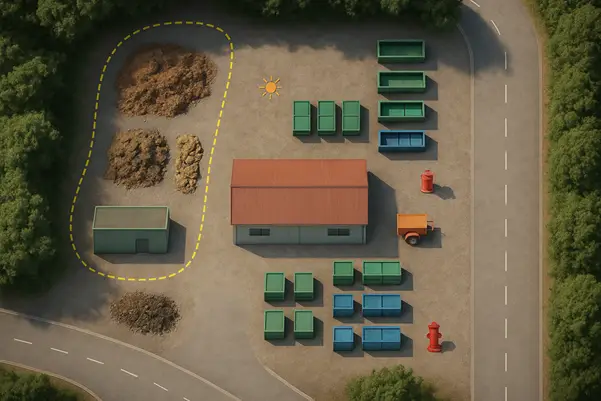The widespread use of lithium-ion (LiBs) presents an ongoing and significant challenge to Australia’s waste management operations. As the volume of discarded Libs continues to rise, so too does the risk of fire – many of which are triggered by damaged or improperly disposed batteries within the waste stram. Without large-scale detection and screening systems in place, these hazards will persist, threatening both operational continuity and the safety of workers and the environment.
The Need for Advanced Detection and Prevention
To address this critical issue, there is an urgent need to invest in advanced battery detection technologies and specialised recycling processes. Effective solutions must go beyond current reactive approaches and enable early identification of LiBs before they enter shredders or compactors. Enhanced screening capabilities can significantly reduce the risk of thermal runaway events, which are notoriously difficult to control once triggered.
Interim Measures for Waste Facilities
While long-term infrastructure upgrades are essential, Waste and Resource Recovery Centres (WRCs) must adopt practical, immediate strategies to manage fire risk on-site. Key “management-in-use” practices include:
- Spreading waste in open areas to reduce heat concentration and improve water access.
- Separating combustible stockpiles to prevent fire from spreading across large volumes.
- Removing unaffected waste from the vicinity of active fires to limit escalation.
When LiBs are identified, prompt isolation and rapid cooling are crucial to contain thermal runaway and minimise damage. Firefighting strategies must also be adapted to ensure that water and suppression agents can effectively reach the heat source, often buried within mixed waste.
SOTERA’s Work with the City of Gold Coast
Over the past month, SOTERA has partnered with the City of Gold Coast to assess fire safety infrastructure across multiple WRCs. These evaluations were conducted in line with the Building Code of Australia (BCA), AFAC 2022 Guidelines, and Queensland Environmental Services Regulations (QESR).
For each facility, SOTERA provided tailored risk assessments and engineering recommendations, focused on:
- Evaluating and upgrading thermal imaging systems for early fire detection.
- Enhancing the capacity and coverage of water suppression carts and fire hose reels.
- Recommending cost-effective improvements to meet regulatory standards while supporting long-term operational resilience.
Our approach combines technical expertise with site-specific planning, ensuring that safety upgrades are both compliant and practical. Across all engagements, SOTERA’s goal is to empower waste facilities to proactively manage the fire risks posed by LiBs—before they become unmanageable emergencies.

